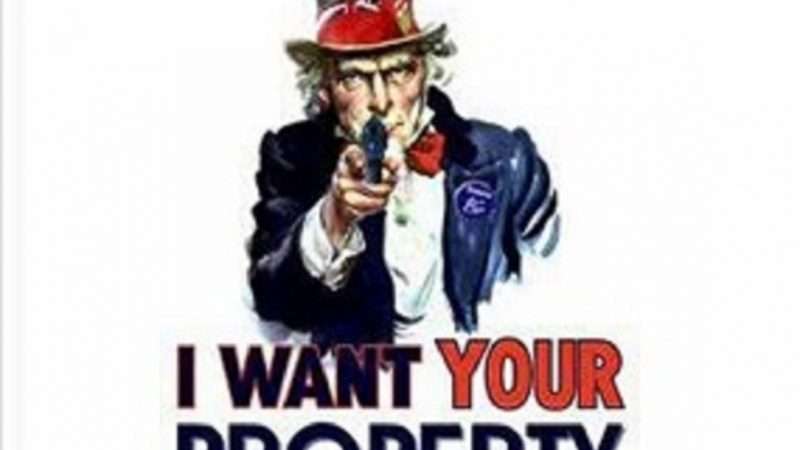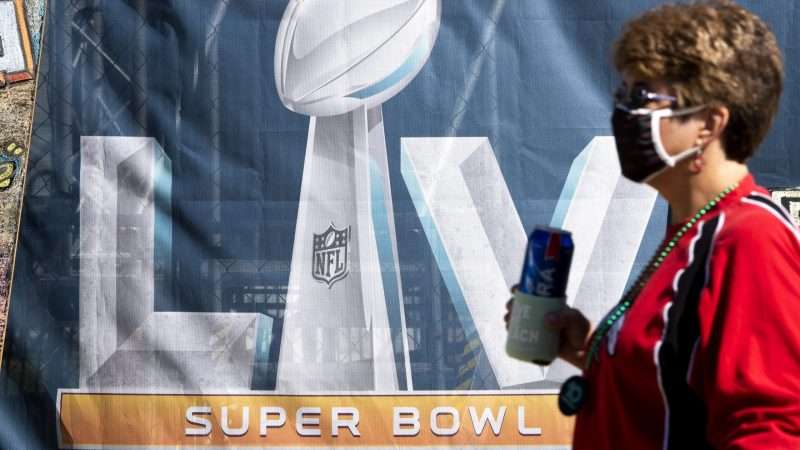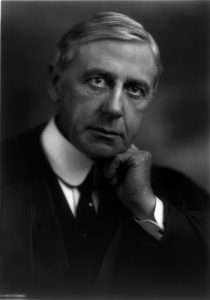
The Saturday after voters in Washington, D.C., and Oregon voted to loosen legal restrictions on magic mushrooms, my girlfriend and I celebrated in the most appropriate way possible. We each ate almost 5 grams of the stuff, ground up and stuffed into capsules. This was a Venti-sized, mind-blowing “heroic dose” in the parlance of the late Terence McKenna, the Johnny Appleseed of hallucinogenic fungi, and we tripped for a good chunk of the afternoon and early evening.
Journeying to the center of our minds via vision-inducing drugs (variously called hallucinogens, psychedelics, and entheogens) is perfectly suited to a world that is hyper-polarized, literally and figuratively locked down, and increasingly a little too close to an Edvard Munch painting for comfort. Mushrooms and similar substances are known to produce quasi-religious feelings of universal love, connection, empathy, and hope. They work on an intensely individual level but help you get along better with your family, neighbors, and coworkers. Far from an escape from reality, they can provide an entry point to deeper engagement with your limitations, your fears, and your aspirations.
What’s not to celebrate?
The mushroom votes—not to mention the passage of pro-marijuana initiatives in states as traditionally straight-laced as Arizona, Mississippi, and South Dakota—are undeniable confirmation that we’re in the middle of a pharmacological revolution whose implicitly libertarian goal is nothing less than giving us all more and better control over our very moods and minds. As a popular meme puts it, the drug war is over and the drugs won.
There are signs everywhere that, more than 50 years after drug pioneer Timothy Leary exhorted us all to “turn on, tune in, and drop out” (at an event preposterously, wonderfully titled “A Gathering of the Tribes for a Human Be-In”), we’re finally ready to receive the message that powerful drugs not currently stocked by your local pharmacist can help you better understand the world and thrive in it. Wherever you look, the culture is saturated like a Merry Prankster’s sugar cube with books, movies, and events featuring psychedelics such as LSD, psilocybin, mescaline, ketamine, and ayahuasca, as well as friendly cousins such as GHB and MDMA.
Knowing asides about “ayahuasca bros” and Burning Man, an annual festival that is practically synonymous with drug use, have reached a level of ubiquity at which they require no explanation. “Micro-dosing”—taking small amounts of LSD or psilocybin to boost mood and motivation—has been an accepted practice among Silicon Valley programmers, Wall Street traders, and even long-haul truckers for a decade or more. The 2020 documentary Have a Good Trip features celebrities such as Sting, Nick Offerman, Sarah Silverman, and Ben Stiller talking openly about their use of hallucinogens. (The film adds nuance and gravity to the subject by including interviews with the late Anthony Bourdain and Carrie Fisher, both of whom struggled with substance abuse.)
Oscar-winning filmmaker Errol Morris has just released My Psychedelic Love Story, which tells the story of Joanna Harcourt-Smith, Timothy Leary’s muse and partner in crime while he was a fugitive on the run from the U.S. government following a daring prison escape in 1970. In 2017, Morris released Wormwood, a Netflix series investigating the 1953 death of Frank Olson, a government scientist involved with MKULTRA, the secretive Cold War mind-control program that dosed hundreds of unwitting subjects with LSD and other substances. Sidney Gottlieb, the head of MKULTRA, is himself the subject of a recent biography by Stephen Kinzer, Poisoner in Chief (Henry Holt and Co.), which revels in the irony that it was the CIA that effectively introduced LSD to the United States in a misguided search for a truth serum to use on spies. The psychedelic renaissance even has its own glossy magazine, DoubleBlind, a publication that’s as sumptuously illustrated as any of the trips its articles describe (think National Geographic meets Wired). “We’re not speaking to the veteran tripper nor evangelizing to the anti-drug square,” write the editors, “We are speaking to everyone who is curious about psychedelics.”
In 2018, journalist Michael Pollan topped the New York Times bestseller list with How to Change Your Mind: What the New Science of Psychedelics Teaches Us About Consciousness, Dying, Addiction, Depression, and Transcendence (Penguin Press). The same year saw the release of Trip: Psychedelics, Alienation, and Change (Vintage), a memoir-cum-manifesto by the literary novelist Tao Lin that took a deep dive into the life and thought of McKenna, co-author of the seminal reference work on how to cultivate and use magic mushrooms. The new memoir Listening to Ecstasy: The Transformative Power of MDMA (Park Street Press), by psychotherapist Charles Wininger, is the latest attempt by a mental-health practitioner to come out of “the chemical closet” and forthrightly discuss both his personal use of psychedelics and how they might help patients. The world is, at long last, ready for “serious fun,” he writes.
On the medical and legal fronts, MDMA, which was banned in 1985, is in stage 3 clinical trials for use in treating post-traumatic stress disorder (PTSD). If all goes well, the Food and Drug Administration (FDA) will approve its use by prescription in therapeutic settings within a few years. Researchers and therapists are similarly experimenting with ways to legalize the medical use of LSD and psilocybin, which the FDA has recognized as a “breakthrough therapy” for depression. Other researchers are using psychedelics to treat addiction and substance abuse—one of the most promising clinical uses of LSD before it was banned in the late ’60s. (The founder of Alcoholics Anonymous, “Bill W.,” praised the drug’s effects until his 12-step colleagues told him to cool it.)
“The psychedelic drug industry is ‘the new cannabis’ for investors,” reads a recent, and increasingly typical, headline at Yahoo! Finance. The story discusses the rising valuation of MindMed, a publicly traded Canadian company that is seeking FDA approval of various psychedelics, and the emergence of Compass Pathways, “the first psychedelic drug company to reach a billion dollar market cap when it went public on the Nasdaq.” Business meetings with titles such as “The Psychedelic Opportunity” and “The Economics of Psychedelic Investing” are popping up like so many magic mushrooms in the mud.
“Better living through chemistry” started out as an earnest advertising slogan for the DuPont conglomerate before the phrase became a countercultural in-joke in the 1960s. These days, as the number and kind of what the government defines as either “licit” or “illicit” substances have proliferated, it aptly describes the American way of life. The question isn’t between drugs and abstinence; it’s between smart, intentional use and unexamined, mindless ingestion. Two-thirds of us use legal prescription drugs, according to researchers at Georgetown University. Almost as many—60.1 percent, according to the latest National Survey on Drug Use and Health—used alcohol, tobacco, kratom, marijuana, or another drug in the past month. Just under 2 million used a hallucinogen, the category that includes the mushrooms approved by Oregon and D.C. voters.
Which brings me back to my trip.
I was in my living room when the drugs kicked in, wearing a sleep mask and listening to spacey, ethereal, electronic music. Suddenly, I was like Billy Pilgrim, the time-and-space-traveling G.I. hero of Kurt Vonnegut’s 1969 novel Slaughterhouse-Five. Every trip is different, and for the next several hours I roamed the known and unknown universe and commingled with the living and the dead, with an emphasis on the latter.
I spent time with an old friend who committed suicide by gun years ago. (His apartment had been surrounded by the police due to overdue rent and antisocial behavior brought on by unchecked alcoholism.) I revisited dark, booze-sloppy periods during which I was distant and inattentive to my sons when they profoundly needed me. I shared a brief-but-welcome hug with my own long-dead father, who, like Vonnegut, served in Europe during World War II and participated in suffering and carnage that I thankfully will never personally know.
Never for a second did I lose touch with basic reality, but past sounds, sights, smells, and especially emotions were all around me. For the first time in more than a quarter-century, I experienced my father’s scent, an idiosyncratic blend of Brut deodorant, Barbasol shaving cream (the “beard buster”), Pall Mall Red cigarettes, and denture powder. I knew it wasn’t real, but it unlocked memories and moments I hadn’t thought about in forever. Later, my girlfriend and I lay down together and shared what we were seeing and what we were feeling, which produced a sense of closeness that was intense and even a little scary in its power. Even at their best, trips are always a workout, in the sense that a long hike up a mountain is a workout. You feel good and tired afterward.
I could go on, but let’s be honest: Descriptions of drug trips, even more than conventional travel stories, are boring as hell to read because they are so ultra-personalized, so filled with barely coherent symbolism, and so indeterminate in their meaning. (As with life itself, you may not know whether something really important happened for days, months, or even years.) The significance of any particular trip is far less than the sum of all of them. Fortunately, we will be taking more and more as support for the war on drugs declines and cities and states (and, eventually, the federal government) move toward legalization. If you’re interested in giving shrooms a try, read Mike Riggs’ “How to Take Shrooms,” first.
You will not be taking Tim Leary’s trip or anyone else’s. Today’s psychedelic revolution will integrate the breakthroughs and, if we’re lucky, learn from the follies of past flirtations with iconoclasm and behavior as outlandish as it was necessary to rejuvenate a country governed by what Leary called a “menopausal mentality” and run by 50-year-old men who looked twice their age. The Human Be-In took place in 1967 in San Francisco’s Golden Gate Park and featured a chanting Allen Ginsberg, hippies dressed like Robin Hood and Maid Marian, and rock bands, one of them (Blue Cheer) named for a variety of LSD. The revolution today is taking place at corporate retreats in Napa (of all places), research labs at Johns Hopkins and New York University, 7-Eleven parking lots, and everywhere in between. Contemporary psychonauts are looking for insight, relief, fun, escape, and a million other things to make their lives more interesting and bearable.
What’s different this time is that we’ve all grown up with (mostly legal) drugs. We have a more mature understanding of their potential for use and abuse, whether legal or not. The drug war has been revealed not simply as expensive and destructive of civil liberties but as ineffective at keeping pharmacological substances from the people who want them. Our overwhelmingly positive experiences with first medical and then recreational pot have taught us that there is such a thing as responsible drug use. Obversely, we see that skyrocketing rates of opioid addiction don’t indict the substances; they indict the legal frameworks that surround drugs, especially rules that make it harder for people with problems to seek and receive help.
“People should have the fundamental human right to change their consciousness,” Rick Doblin, head of the Multidisciplinary Association for Psychedelic Studies, told me in February 2020, just as the coronavirus was starting to trigger lockdowns that would make psychic travel easier than its meatspace alternative. Doblin’s group is sponsoring the MDMA trials that will soon lead to its use in psychotherapy to treat PTSD. “Psychedelics are tools,” he emphasized. What we will build with them isn’t yet clear, and maybe it never will be. But this fall’s mushroom moment at the polls is just the beginning of a trip that will be taking us as far as we dare to dream.
from Latest – Reason.com https://ift.tt/2MKUzY2
via IFTTT








